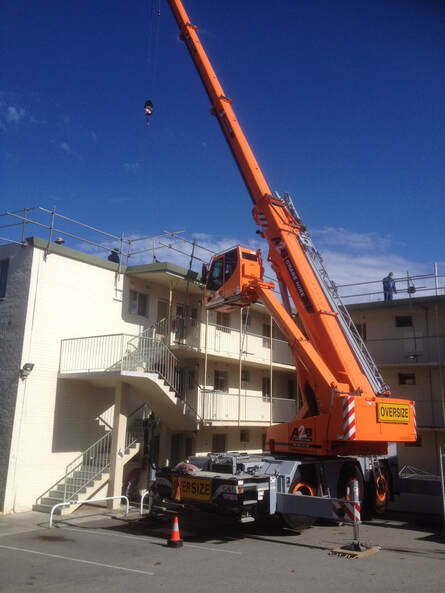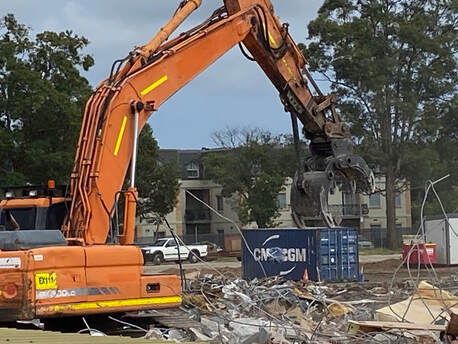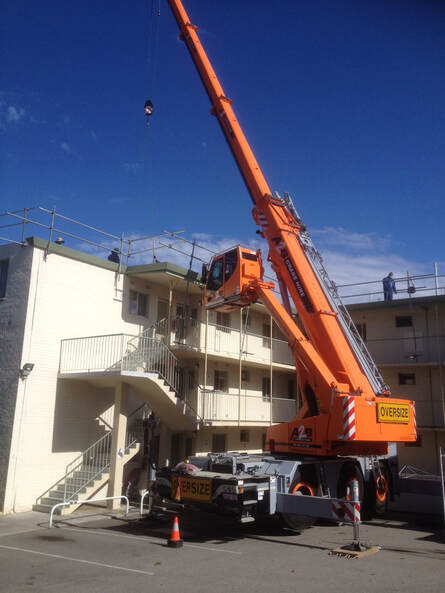|
High employee turnover in construction and field service – are your workers deserting a sinking ship or are there other underlying problems? Some projects have a large turnover of employees with people continually leaving and new employees taking their place. Unfortunately, some managers have an attitude that it’s ‘good riddance’ and if someone wants to leave they should – and the sooner the better. However, this churn of people can be disruptive and expensive for the project. The costs of high employee turnover: A high employee turnover rate:
If the project has an excessively high rate of employee turnover it’s important to ascertain the possible reasons for this. There are many reasons why people resign, and sometimes the problem is simple and easy to remedy for example:
This article was first published on the ClockShark website. To visit this website and continue reading the article click on the link above.
Please share this post To read more about the author’s books and find out where you can purchase them visit the pages on this website by clicking the links below: 'Successful Construction Project Management: The Practical Guide' 'Building a Successful Construction Company: The Practical Guide' 'Construction Claims: A Short Guide for Contractors' 'Construction Project Management: Tips and Insights' 'Construction Book reviews' To read more about the author visit the page 'Paul Netscher' Want to contact Paul Netscher please enter your details on 'Contacts' Find out how Paul Netscher can help you Order your books from Amazon Order your books from Amazon UK © 2017 This article is not to be reproduced for commercial purposes without written permission from the author.
0 Comments
Finishing a construction project can be hectic and, sometimes, even chaotic. The project team is often focused on finishing the obvious work, while sometimes also being distracted by moving onto their next project. Unfortunately, in the rush to complete the project many small, but sometimes important, items are overlooked which could ultimately delay completing the project. In some cases, they could prove costly when items aren’t executed properly. To make matters worse contractors often start removing staff from a project before it’s finished so that project costs are reduced, or, so they can start a new project. Sometimes these are key team employees who often have project knowledge that could be essential to close out the project correctly. To avoid problems, it’s worth preparing a completion list several weeks before the project is due to be completed, and then allocate ‘action items’, with their completion dates, to those responsible for completing the items. It’s important to ensure that subcontractors and suppliers are aware of items they must attend to – particularly when it comes to supplying documentation such as operations manuals and warranties. Many project handovers have been derailed by a subcontractor who didn’t fulfil all their obligations. In some cases, it may even be prudent to prepare a completion schedule so that progress of the items can be monitored. Here’s a construction project checklist of items to consider:Some of the items which should be considered at the end of the project include:
This article was first published on the ClockShark website. To visit this website and continue reading the article click on the link above.
Please share this post To read more about the author’s books and find out where you can purchase them visit the pages on this website by clicking the links below: 'Successful Construction Project Management: The Practical Guide' 'Building a Successful Construction Company: The Practical Guide' 'Construction Claims: A Short Guide for Contractors' 'Construction Project Management: Tips and Insights' 'Construction Book reviews' To read more about the author visit the page 'Paul Netscher' Want to contact Paul Netscher please enter your details on 'Contacts' Find out how Paul Netscher can help you Order your books from Amazon Order your books from Amazon UK © 2017 This article is not to be reproduced for commercial purposes without written permission from the author. Read from the BBC - London Fire 6 questions to be asked
See this frightening vision Are your buildings safe? Are the materials on your project safe? What steps will you take today to ensure a similar tragedy doesn't occur on one of your projects? Using old construction equipment isn’t as cheap as you might thinkThe other day I was watching a mobile crane lifting items from a truck onto the roof of a 3-storey building. Now nothing unusual with this, except the operator sat in a cab which could be raised up to a height where he was level with the roof. He could see exactly where the load was being placed in the middle of the roof. He wasn’t dependent on someone talking to him on a radio or standing on the edge of the roof guiding him with hand signals. When he collected the load from the truck he was looking down into the truck and could clearly see the load. The whole operation went quicker and more safely than it would normally go with a conventional mobile crane with the operator’s cab placed a couple of metres off the ground. Furthermore, the operator wasn’t craning his head upwards at an awkward angle to see the roof 12 meters above him. He also didn’t have to look straight up into the sun. I marvelled at how the design of construction equipment has improved over the years. I was reminded that many years ago the company I worked for operated cranes that were 20 and more years old. In fact, the head of the equipment department was proud of the fact that his team kept these old cranes running, sometimes long past their life expectancy. The cranes had been paid for several years before so the rental rates the projects were charged were nominal. Our estimating department used these low rental rates when they priced new projects which gave many projects a winning price advantage. However, this sometimes caused problems when the cranes weren’t available when the project began, and the project team found they had to hire cranes from external sources at rental rates nearly double what the estimator had budgeted in the project price. Now it was one thing having an item of equipment that was cheap to rent, but it was another thing when the equipment broke down repeatedly. In fact, the cheap item of equipment suddenly became very expensive when teams were left standing because the crane was broken! The project was delayed. Teams had to work late to compensate for the time when the crane was out of action. Supervisors and workers became frustrated. Quality was compromised when the crane broke down in the middle of pouring concrete. Furthermore, the equipment division had to rush mechanics to the project to undertake emergency repairs. Sometimes the item couldn’t be repaired on the project and had to be transported back to the yard and a replacement item had to be ordered and shipped to the project. Costs mounted! I realised the folly of using old equipment and eventually persuaded the company to purchase a new fleet of cranes which were more expensive to rent but far more reliable. This same company had an extensive fleet of earthmoving equipment and had kept meticulous records of the maintenance and finance costs of the items. They carried out various studies relating the purchase price of new equipment, plus the cost of repairs and maintenance of the item over time, and taking into account the resale value of the item when the company sold and replaced it. Now the cost of the repairs and maintenance increased the older the item was, and the resale value decreased the more hours the machine worked. By plotting these values it was possible to work out the optimum point when the item should be replaced – after this point the item became more costly to maintain and keep. This optimum point varied between different items of equipment (excavators, loaders, graders, etc). Of course, this does generalise slightly as not every item of equipment is exactly the same, or has operated in the same conditions, or with the same operator. Indeed, I’m sure many of us have owned the dud vehicle that has given trouble from day one while others with the same vehicle haven’t had one iota of problems. Then there are other items that just seem to go on and on, as good as the first day they left the showroom. The disadvantages of using old construction equipmentConstruction companies that own their own equipment often face challenges of deciding whether to purchase new or used items. Then when should the item be replaced? Projects that rent or hire equipment often rent the cheapest item without considering the age or reliability of the machine. Making the wrong decision can be very costly – but often these costs aren’t obvious. So what are the disadvantages of using older equipment?
Choosing the right construction equipmentConstruction companies need to carefully consider whether to purchase new equipment or previously used equipment. Then they should consider when to replace the item. These decisions can have major financial consequences as well as impacting the success of their projects. In some cases, when the company doesn’t have the financial ability to purchase a new machine, or a replacement item, it may be better not to own the item, but to rather rent the item from an external provider. Projects should carefully consider when they hire equipment for the project whether the cheapest item available is really going to be the best, and ultimately the cheapest item for their work. A broken piece of equipment can be very costly and disruptive to the project. #constructionequipment #constructionmachines #constructionmanagement #contractors This article was first published on the ClockShark website. Please share this post To read more about the author’s books and find out where you can purchase them visit the pages on this website by clicking the links below: 'Successful Construction Project Management: The Practical Guide' 'Building a Successful Construction Company: The Practical Guide' 'Construction Claims: A Short Guide for Contractors' 'Construction Project Management: Tips and Insights' 'Construction Book reviews' To read more about the author visit the page 'Paul Netscher' Want to contact Paul Netscher please enter your details on 'Contacts' Find out how Paul Netscher can help you Order your books from Amazon Order your books from Amazon UK © 2017 This article is not to be reproduced for commercial purposes without written permission from the author.  The other day I was watching a mobile crane lifting items from a truck onto the roof of a 3-story building. Now nothing unusual with this, except the operator sat in a cab which could be raised up to a height where he was actually level with the roof. He could see exactly where the load was being placed in the middle of the roof. He wasn’t dependent on someone talking to him on a radio or standing on the edge of the roof guiding him with hand signals. When he collected the load from the truck he was looking down into the truck and could clearly see the load. The whole operation went quicker and more safely than it would normally go with a conventional mobile crane with the operator’s cab placed a couple of meters off the ground. Furthermore, the operator wasn’t craning his head upwards at an awkward angle to see the roof 12 meters above him. He also didn’t have to look straight up into the sun. I marveled at how the design of construction equipment has improved over the years. I was reminded that many years ago the company I worked for operated cranes that were 20 and more years old. In fact, the head of the equipment department took particular pride at how his team kept these old cranes running, sometimes long past their life expectancy. The cranes had been paid for many years ago so the rental rates the projects were charged were nominal. Our estimating department used these low rental rates when they priced new projects which gave many projects a winning price advantage. However, this sometimes caused problems when the cranes weren’t available when the project began, and the project team found they had to hire cranes from external sources at rental rates nearly double what the estimator had budgeted in the project price. Now it was one thing having an item of equipment that was cheap to rent, but it was another thing when the equipment broke down repeatedly. In fact, the cheap item of equipment suddenly became very expensive when teams were left standing because the crane was broken! The project was delayed. Teams had to work late to compensate for the time when the crane was out of action. Supervisors and workers became frustrated. Quality was compromised when the crane broke down in the middle of pouring concrete. Furthermore, the equipment division had to rush mechanics to the project to undertake emergency repairs. Sometimes the item couldn’t be repaired on the project and had to be transported back to the yard and a replacement item had to be ordered and shipped to the project. Costs mounted! I realized the folly of using old equipment and eventually persuaded the company to purchase a new fleet of cranes which were more expensive to rent but far more reliable. This same company had an extensive fleet of earth-moving equipment and had kept meticulous records of the maintenance and finance costs of the items. They carried out various studies relating the purchase price of new equipment, plus the cost of repairs and maintenance of the item over time and taking into account the resale value of the item when the company sold and replaced it. Now the cost of the repairs and maintenance increased the older the item was, and the resale value decreased the more hours the machine worked. By plotting these values it was possible to work out the optimum point when the item should be replaced – after this point the item became more costly to maintain and keep. This optimum point varied between different items of equipment (excavators, loaders, graders, etc). Of course, this does generalize slightly as not every item of equipment is exactly the same, or has operated in the same conditions, or with the same operator. Indeed I’m sure many of us have owned the dud vehicle that has given trouble from day one while others with the same vehicle haven’t had one iota of problems. Then there are other items that just seem to go on and on, as good as the first day they left the showroom. |
Archives
June 2024
Note: We welcome genuine comments, especially comments that add additional information to the subject matter in the article. We however reserve the right to remove inappropriate comments, which includes comments that have nothing to do with the subject, comments that include inappropriate language, and comments that are an advertisement for a product or company, or which include an advertising link. Comments must be in English. We will not enter into discussion on why a particular comment was removed.
CategoriesCopyright 2016 - The attached articles cannot be reproduced for commercial purposes without the consent of the author.
The opinions expressed in the attached articles are those of the writer. It should be noted that projects are varied and different laws and restrictions apply which depend on the location of the contractor and the project. It's important that the reader uses the supplied information taking cognisance of their particular circumstances. The writer assumes no responsibility or liability for any loss of any kind arising from the reader using the information or advice contained herein. "I have what I consider some of the best books on construction management."
Books are available from: Amazon.com Amazon.co.uk takealot.com kalahari.com Amazon.in Amazon.de Amazon.fr Amazon.it Amazon.com.au Powell's Fishpond uread bokus Amazon.ca Amazon.es Other retail stores Available in paperback or on Kindle "28 YEARS OF CONSTRUCTION PROJECT MANAGEMENT EXPERIENCE, DEVELOPING SUCCESSFUL CONSTRUCTION PROJECT MANAGERS AND BUILDING SUCCESSFUL CONSTRUCTION COMPANIES"
|








 RSS Feed
RSS Feed




